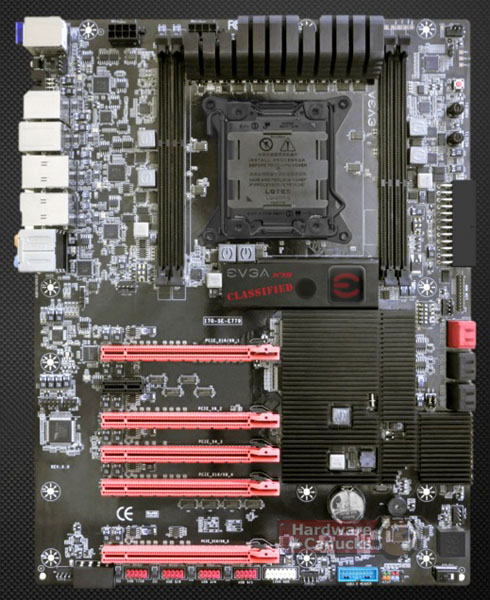It seems that a fair few new enthusiast products reared their heads at this year's NVIDIA GeForce LAN event, among them was EVGA's X79 Classified E779 high-end Intel Sandy Bridge E motherboard.
Most of the details are still shrouded in mystery but a lot can be ascertained from images and titbits of information provided at the event.
 Image credit: Hardware Canucks
Image credit: Hardware Canucks
The design screams throughout of overclock streamlining. Two 8-pin CPU connectors provide a high-quality and ample power feed, a right-angled 24-pin connector allowing room for large cooling solutions, native 4-way SLI, the use of POSCAP capacitors to provide a more predictable and stable power supply response over and range of conditions, the use of fewer, tightly-packed integrated ICs and uniformly-spaced RAM slot pairs to provide uniformity and consistent component response. Phew!
The must-have high-end overclocking features are present, including on-board Bluetooth, which, though functionality is unconfirmed, if it follows trend will likely allow for wireless adjustment of voltages and frequencies, independent of an operating system for those wishing to push their systems to the limit; a supplied EVBot overclocking tool is further indication.
Power and reset buttons are on-board with voltage probe points present for those who just don't believe what the BIOS is telling them, and a plethora of high-end connections - 8x USB 3.0, 2x SATA 3, 4x SATA 2, dual Gigabit Ethernet ports, power and reset buttons.
Though only time and benchmarking will tell, the EVGA E779 certainly appears to have the right formula for high-end overclocking. We're sure HEXUS.labs will love to get its hands on one these and take it apart.













